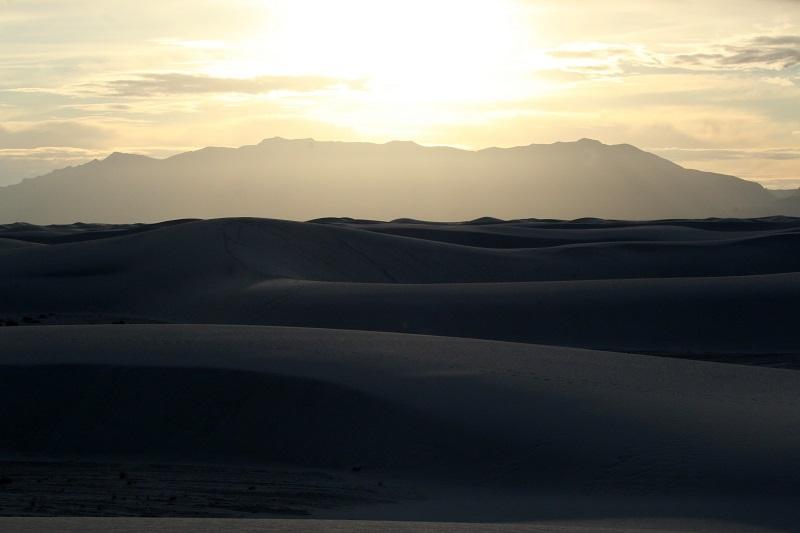
White Sands National Monument / Erika Zambello
I sat on the top of a slope, the bright orange, plastic sled firmly beneath me. My senses felt overloaded, confused, not only by the spectacularly beautiful scenery surrounding White Sands National Monument but also the conflicting memories the desert evokes. I planned to sled down one of the bright white dunes, decked out in a winter coat, hat, and scarf - evoking winter. Yet I planned to sled on sand, reminding me of summer, the beach, my hometown in Florida. Kicking my legs forward, I began to move, faster and faster and faster as the white hills sped by me. Joy bubbled up, erupting in a high-pitched squeal reminiscent of my childhood.
The sand beneath my sled is composed of white gypsum. According to the National Park Service: "Rising from the heart of the Tularosa Basin is one of the world's great natural wonders - the glistening white sands of New Mexico. Great wave-like dunes of gypsum sand have engulfed 275 square miles of desert, creating the world's largest gypsum dunefield. White Sands National Monument preserves a major portion of this unique dunefield, along with the plants and animals that live here."
My mother and I drove by the national monument on a New Mexico road trip, drawn by the unique images of the park posted online by others who had visited. As usual, I did almost no research before arriving on the white dunes, making the experience that much more powerful.
We began on the nature trails near the visitor's center, winding up and around the bushes, trees, and grasses that managed to grow on the sand. Purple mountains rose in the distance, with only the whistle of the breeze and the rumble of miltary planes overhead surrounding us. I felt distinct deja-vue, as the hills looked exactly like those in Florida. Was the Gulf of Mexico just on the other side? I kept wondering. But no, "Long ago, an ancient sea covered most of the southwestern United States. It was during this time that layers of gypsum were deposited on the seafloor. The rise and fall of the sea level millions of years ago influenced the making of the gypsum sand found at the monument today."
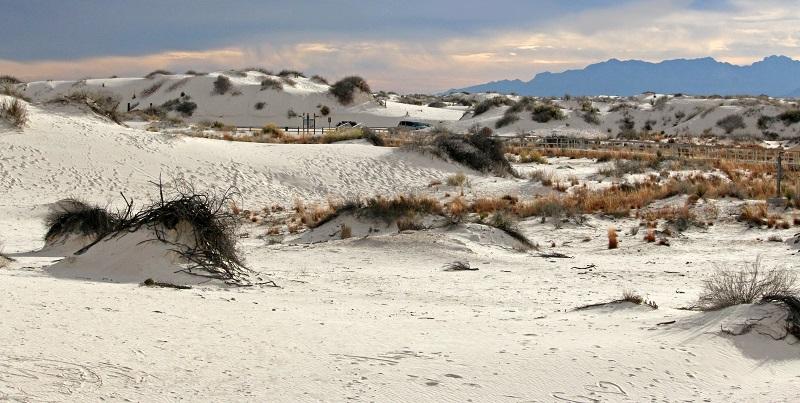
White Sands National Monument / Erika Zambello
Farther into the national monument, nearly all vegetation disappeared, leaving nothing but the waves of sand against the horizon. Here we sledded, waxing the bottom to zip down the hills that much faster. Sure, many people think of sledding as a kid activity, but rushing through the landscape felt like flying, an activity enjoyed at any age. For a few brief moments, I knew what the birds in the park must feel like as they wheeled in the air about the ground.
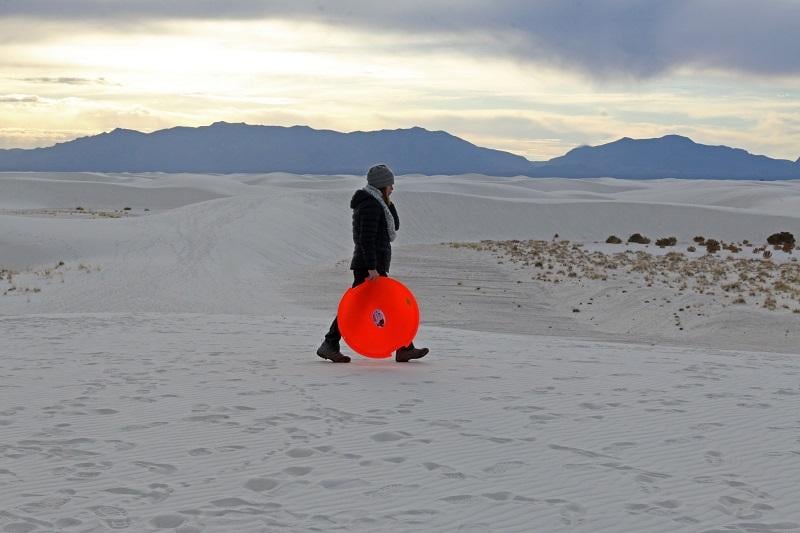
Sledding at White Sands National Monument / Erika Zambello
We had arrived - unwittingly - at the perfect time of day, the sun slipping behind the mountains in a blaze of orange and gold. The deepening sky contrasted sharply with the sand, adding dark shadows and white sparkles to the gypsum. Unlike Florida - where foot traffic damages the dunes - here we could walk wherever our heart desired (though getting lost is always a concern). We wandered up one hill, then down another, periodically sitting to just take in the sights and sounds around us. Horned larks ran along the bottomlands, looking for seeds and other food to tide them over for the long night ahead.
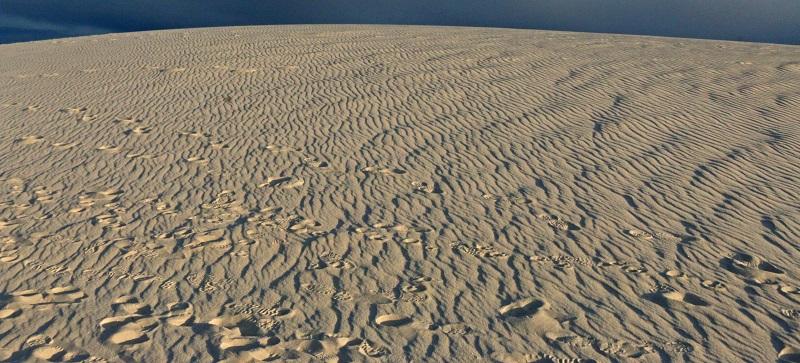
White Sands National Monument / Erika Zambello
Footsteps created alternating patterns in the sand, leaving symbolic breadcumbs to follow the paths of visitors earlier in the day. In my mind's eye I pictured the famous dunes of the Sahara desert, so similar to White Sands except for the color. Unsurprisingly, filmmakers are drawn to the landscape for the same strangeness that captivated my attention, and portions of Transformers and Year One were both created here.
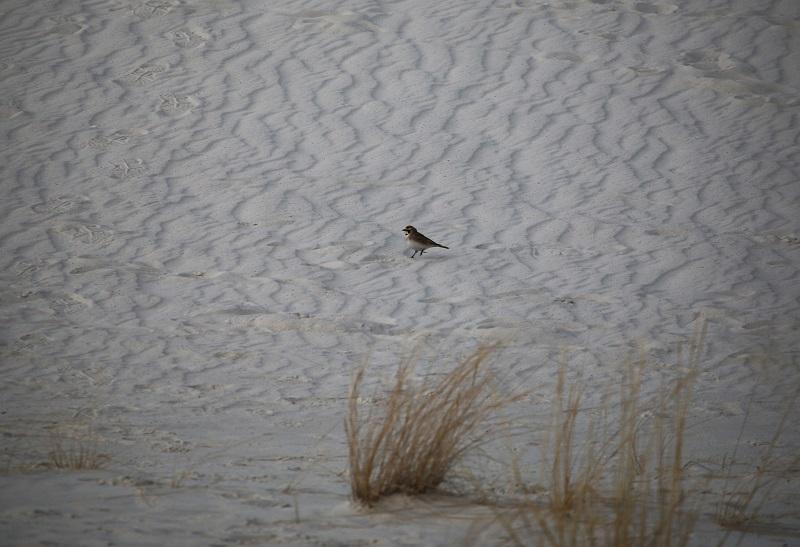
A Horned Lark runs across the sand / Erika Zambello
Before the founding of this national monument, companies attempted to mine the gypsum for commercial purposes. Thankfully, the sand proved unprofitable, especially compared to the value of the land as a tourist attraction: "Even before White Sands was declared a national monument, the area was a popular picnicking location. It was no surprise when there were over 4,000 people in attendance at the opening day ceremony on April 29, 1934. Visitation continued to increase, with an estimated 34,000 people visiting in the first year. It was clear White Sands needed facilities to accommodate visitors' requests for restrooms, water, and information on the history."
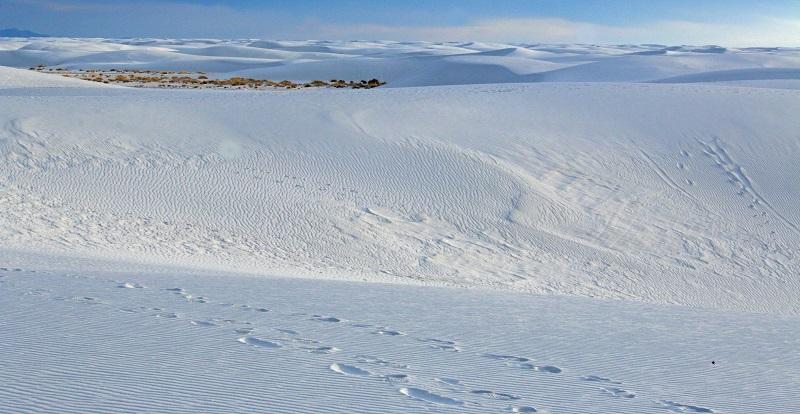
Footsteps at White Sands National Monument / Erika Zambello
As the sun finally disappeared, visitors gathered to view the explosion of color. We all stood silently, connected across space and time as light silhouetted the mountains. In natural places, I often feel a connection to the plants and animals that surround me. But here, I also felt a thread wind all of us gazing across the sand together, a shared moment of the sublime. As a result of both the popularity and uniqueness of White Sands, a movement has begun to change its designation from national monument to national park, the 61st location to be so named. Congress must pass legislation to create the new national park, but if they do experts expect a jump in both visitation and revenue generated for the local economy.
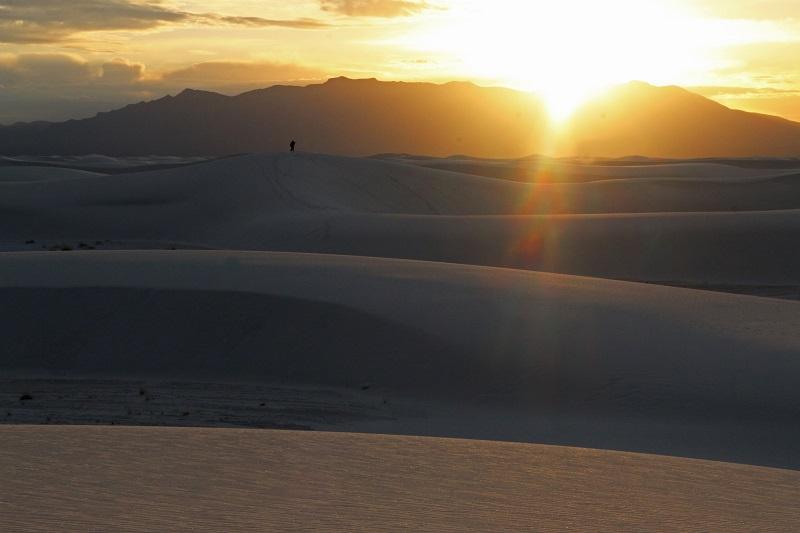
White Sands sunset / Erika Zambello
One afternoon was not enough time to experience the park, and as darkness fell we retreated to the parking area. In the future, both my mother and I plan to return, hoping to hike across the dunes for an entire day. Since we have experienced the national monument in the winter, we will try to arrive in the summer months, when unique species like the bleached earless lizard and spadefoot toad may be out and about. Till then, I can close my eyes and mentally return to the sunset dunes anytime I wish!



Add comment